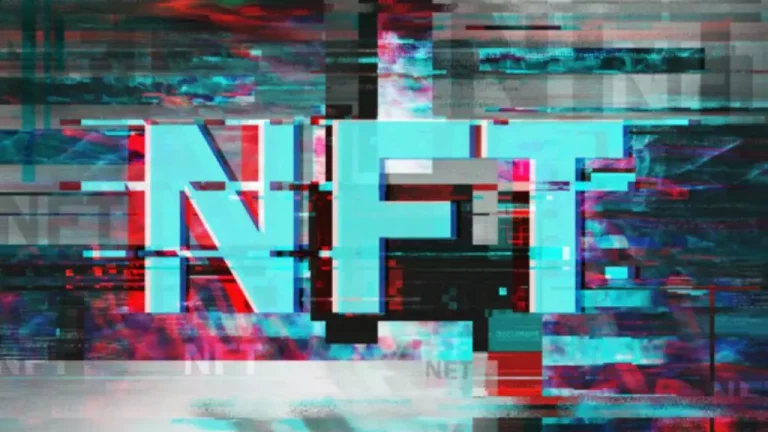The backing and reserves of USDT, the world’s largest stablecoin, have come into question. In some ways, that is not so totally different from central banks, which additionally do not depend on a reserve asset to maintain the value of the currency they issue stable. Federal Reserve units financial coverage publicly based on well-understood parameters, and its status as the issuer of authorized tender does wonders for the credibility of that policy. As the name implies, stablecoins goal to address this problem by promising to carry the value of the cryptocurrency regular in a selection of Stablecoin Payments methods. Though Bitcoin stays the preferred cryptocurrency, it tends to endure from high volatility in its value, or change price. For instance, Bitcoin’s worth rose from just under $5,000 in March 2020 to over $63,000 in April 2021, solely to plunge almost 50% over the following two months.
The Stablecoin Issuance Course Of
There are four several types of stablecoins, every with its own means of fixing the worth of the tokens to a stable figure Proof of stake. As the sector matures, successful stablecoin initiatives will doubtless be people who prioritize transparency, maintain sturdy reserves, and adapt to evolving regulatory necessities. The implementation of complete frameworks by December 2024 marks a crucial milestone in the industry’s improvement toward larger legitimacy and stability. While the stablecoin issuance process includes cautious planning and implementation, several important dangers and challenges can impact their stability and success. Effective reserve management is paramount for sustaining belief and stability. Major stablecoins like Tether now hold vital portions of their reserves in US Treasury Bonds, yielding roughly 5% yearly.
Secure Cash In Crypto: Understanding Stablecoin Worth Stability
Blockchains can typically be categorized as either third-party (public) or first-party (private). In conclusion, stablecoins are a cornerstone of the DeFi ecosystem, providing numerous mechanisms to achieve stability. As the market evolves, understanding these mechanisms is crucial for anybody involved in DeFi. These stablecoins are backed by physical belongings such as gold, providing a tangible reserve to take care of worth. Unlike other stablecoins, MakerDAO intends for dai to be decentralized, that means there isn’t any central authority trusted with management of the system. Rather, Ethereum good contracts – which encode rules that may’t be modified – have this job as a substitute.
What Are The Dangers Associated With Stablecoins?
But that’s not to say stablecoins are a completely safe guess — they’re still relatively new with a limited track record and unknown risks, and ought to be invested in with warning. The cryptocurrency exchange Coinbase offers a fiat-backed stablecoin known as USD coin, which may be exchanged on a 1-to-1 ratio for one U.S. dollar. Crypto-collateralized and algorithmic stablecoins can be subject to vital market risks. Price volatility in the underlying property can impact the soundness of the stablecoin, leading to potential lack of value. Stablecoins attempt to deal with price fluctuations by tying the value of cryptocurrencies to other more stable property – normally fiat currencies.
Increased Adoption For Payments And Commerce:
If a sensible contract had been to fail or be hacked, this might lead to the de-pegging of a cryptocurrency. For instance, PAX Gold (PAXG) is a commodity-backed stablecoin that pegs its price to one fantastic troy ounce of a London Good Delivery gold bar. You can put cash into stablecoins like Tether on a few of the greatest crypto exchanges and apps like Kraken and Coinbase. Centralized stablecoins, like USDC (USD Coin) and USDT (Tether), are issued by central entities (like Circle or Tether).
An algorithmic (algo) stablecoin is a type of cryptocurrency that pegs its value to that of one other asset, corresponding to a fiat currency or commodity. Unlike the previous cash on our record, algo stablecoins, also referred to as uncollateralized stablecoins, are not backed by the asset to which they’re pegged. Instead, these coins use sensible contracts and complex math to realize their peg. Stablecoins try to peg their market worth to some exterior reference, usually a fiat foreign money. Stablecoins could additionally be pegged to a foreign money like the U.S. dollar, the value of a commodity corresponding to gold, or use an algorithm to control provide. They also keep reserve property as collateral or through algorithmic formulas that are supposed to manage supply.
Stablecoins have gained significant traction in latest years, with their whole market capitalization growing exponentially. Though there are numerous risks that come with staking your assets, you can earn rewards. Today, there are round 1.7 billion folks and not using a checking account, in accordance with the World Bank.
Intraday swings also can be wild; the cryptocurrency typically strikes more than 10% within the span of a few hours. The regulatory landscape poses significant challenges for stablecoin stability. Currently, the dearth of a comprehensive nationwide regulatory framework in the United States creates uncertainty about oversight responsibilities between agencies just like the SEC and CFTC.
If the issuer of the stablecoin lacks the fiat essential to make exchanges, the stablecoin can shortly lose value and turn out to be worthless. Leading stablecoin issuers like Circle (USDC) have demonstrated the effectiveness of transparency through their practice of sharing monthly reserve reports since 2018. This commitment to transparency has helped USDC maintain maximum fluctuations of simply 0.05% in latest durations.
- From fiat-backed stablecoins requiring dollar-denominated reserves to algorithmic options using good contracts for worth stability, each type presents unique challenges and alternatives.
- Risks include regulatory scrutiny, centralization concerns, and market volatility impacting the soundness of collateralized tokens.
- Cryptocurrency-collateralized stablecoins make use of a different strategy, using different cryptocurrencies as collateral.
- Their pegged nature permits merchants to easily convert different cryptocurrencies into stablecoins throughout market downturns, thus enabling quick access to liquidity.
For those thinking about buying and selling and exploring opportunities within the cryptocurrency house, assets like QUANTUM AI can provide priceless insights and strategies. Stablecoins serve as a bridge between traditional finance and the cryptocurrency world, providing liquidity for trading pairs on exchanges. They enable merchants to quickly move in and out of positions with out converting back to fiat.
By offering price stability in a notoriously volatile market, they enable a variety of use cases, from on a regular basis transactions to complex DeFi functions. Crypto-collateralized stablecoins are digital currencies that derive their stability from being backed by other cryptocurrencies. This exceptional growth underscores their critical function in bridging the hole between traditional finance and the crypto ecosystem.
As the crypto market continues to evolve, the role of stablecoins is likely to turn out to be much more significant. Their rising adoption by major monetary establishments further validates their role in the future of world finance. DAI, for example, requires over-collateralization (typically 150% or more) to account for potential value volatility in the underlying crypto assets. Stablecoins are cryptocurrencies with a peg to other assets, such as fiat forex or commodities held in reserve. The intent behind them is to create a crypto asset with a lot cheaper price volatility, which makes them better for use in transactions.
An knowledgeable strategy ensures that investors can successfully leverage the advantages of stablecoins inside the cryptocurrency investment landscape. The incorporation of stablecoins into decentralized finance (DeFi) will continue to broaden, providing new opportunities for yield era and danger management. As the cryptocurrency ecosystem evolves, stablecoins shall be important in bridging conventional finance with the digital realm. Their worth stability makes them an attractive choice for individuals in search of to transfer cash internationally with out the volatility attribute of traditional cryptocurrencies. By leveraging stablecoins, customers can be positive that the worth of their funds remains constant all through the transaction process. They provide the liquidity needed for varied DeFi protocols and allow users to borrow and lend assets efficiently.
These digital assets have turn out to be essential components of decentralized finance (DeFi), facilitating every little thing from cross-border payments to yield farming. According to latest data, stablecoin transaction volumes are projected to exceed $3 trillion annually by 2025, demonstrating their growing significance in global finance. Somewhat of a sub-category of fiat-collateralized coins, commodity-backed stablecoins are cryptocurrencies which may be pegged to the market worth of commodities similar to gold, silver, or oil. These stablecoins usually hold the commodity using third-party custodians or by investing in devices that maintain them. Such reserves are maintained by impartial custodians and are frequently audited, something that should be thought of cautiously.
Start your own high-profit forex brokerage in just a few days or scale your existing business with the best-in-class forex software XCritical https://www.xcritical.in/. Get the perfect Turnkey Forex Solutions that will provide your business with efficiency, stability, and maximum profit.


